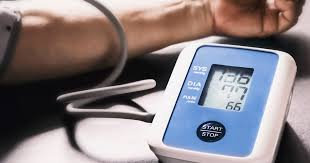You want a leaner body. You aim to reduce stubborn belly and chest fat. At the same time, you wish to build strong, visible muscle. Achieving both might seem like a complex goal for many people. Is it truly possible to lose fat and gain muscle simultaneously?
Many fitness myths exist. One common one is “spot reduction.” This idea suggests you target fat loss from specific body parts. We will debunk this myth and focus on a method that works. We will use a science-backed approach.
The secret lies in a powerful combination. Strategic nutrition and practical training work together. This synergy is the most efficient path. It helps you reach both fat loss and muscle gain goals.
Understanding Body Composition: Fat Loss vs. Muscle Gain
What is Body Fat and Why Does it Accumulate?
Body fat is also called adipose tissue. It stores energy. Our bodies gain fat when we eat more calories than we burn. This is known as a calorie surplus. Hormones also play a part in where fat is stored. For many, fat tends to gather around the belly and chest areas.
The Importance of Muscle Mass
Muscle tissue helps your body in many ways. It burns more calories than fat, even when you are resting. This is your resting metabolic rate (RMR). Building more muscle boosts your RMR. This helps you lose overall fat more easily. Strong muscles not only look good but also improve daily function.
The Myth of Spot Reduction
You cannot choose where your body loses fat. Fat loss happens all over your body. It is a systemic process. Doing endless crunches will not get rid of only belly fat. Doing chest flyes won’t eliminate chest fat alone. Genetics and hormones affect where you store fat. They can also influence where you seem to lose it last.
Strategic Nutrition for Fat Loss and Muscle Synthesis
Calorie Deficit: The Foundation of Fat Loss
To lose fat, you must eat fewer calories than you burn. This is called a calorie deficit. A moderate deficit is often best. Aim for 300 to 500 calories less than your body needs to stay the same weight. This helps you lose fat steadily.
You can use online calculators to find your maintenance calories. Or, you can talk to a nutritionist. They can help you set personalized calorie goals. Eating enough protein is key during a deficit.
Macronutrient Breakdown: Protein, Carbs, and Fats
Protein is vital for building and repairing muscles. It also helps you feel full. Try to eat 1.6 to 2.2 grams of protein per kilogram of your body weight each day. Complex carbohydrates give you energy for workouts. They also provide fiber for healthy digestion. Healthy fats are essential for hormone production and overall well-being. Don’t cut them out completely.
Here is a sample day’s meal plan:
- Breakfast: Scrambled eggs with spinach and whole-wheat toast.
- Lunch: Grilled chicken salad with quinoa and mixed greens.
- Dinner: Baked salmon with brown rice and steamed broccoli.
- Snacks: Greek yogurt or a handful of almonds.
Hydration and Micronutrients
Water is essential for your body to work properly. It aids in metabolism and facilitates nutrient movement. Drink plenty of water throughout your day. Vitamins and minerals, called micronutrients, are also essential. They support energy levels, aid recovery, and keep your body running well. Get them from a variety of fruits, vegetables, and whole foods.
Practical Training for Fat Burning and Muscle Building
Strength Training: The Muscle-Building Engine
Focus on compound exercises. These movements work multiple muscle groups at once. Think about squats, deadlifts, bench press, overhead press, and rows. These are very effective. To keep building muscle, you must use progressive overload. This means gradually increasing the weight, reps, or sets over time.
A good training split can help you recover well. Try full-body workouts three times a week. Alternatively, consider splitting it into upper and lower body days. Many fitness experts agree that compound movements are the most effective way to build strength and muscle.
Cardiovascular Exercise: Accelerating Fat Loss
Cardio helps you burn more calories. High-Intensity Interval Training (HIIT) burns a lot of calories quickly. It can also boost your metabolism after the workout. This effect is called EPOC. Moderate-Intensity Steady-State (MISS) cardio is also suitable for fat burning. Think of a brisk walk or light jog.
Try to do 2-3 cardio sessions each week. You can vary the type and intensity. This keeps your body guessing and prevents boredom.
Balancing Strength and Cardio
You need both strength training and cardio for the best results. Plan your workouts wisely. Do your strength training first on workout days. Or, do cardio on separate days. This helps you maintain energy for lifting heavy. It also helps your muscles recover without hindrance.
Lifestyle Factors for Optimal Results
Sleep: The Unsung Hero of Recovery and Hormones
Getting enough sleep is crucial. Aim for 7-9 hours each night. Sleep is when your muscles repair and grow. It also helps release growth hormone. Good sleep also controls hormones that manage your appetite.
Studies show poor sleep negatively impacts hormones linked to fat storage and muscle growth. It can make fat loss harder. Prioritize your rest.
Stress Management and Its Impact
Stress can make fat loss difficult. High stress levels increase cortisol, a hormone. Too much cortisol can lead to more belly fat, especially visceral fat. Find ways to lower your stress. Try mindfulness, meditation, or enjoyable hobbies.
Consistency and Patience
Sustainable results take time. They come from being consistent with your diet and workout plan. Avoid searching for quick fixes. Instead, focus on a long-term approach. Your body needs time to change and adapt.
Monitoring Progress and Making Adjustments
Tracking Key Metrics Beyond the Scale
The scale doesn’t tell the whole story. Track other things. Measure your waist and chest circumference. Notice how your clothes fit. Track your strength progress in the gym. Are you lifting more weight? Are you doing more reps?
Take progress photos regularly. These visual records can be very motivating. They show you changes that the scale might miss.
Recognizing Plateaus and How to Overcome Them
You might hit a plateau. This is when progress seems to stop. It is common. Your body adapts to your routine. To break through, make changes. Adjust your calorie intake slightly. Change your training intensity. Or, try new exercises.
When to Seek Professional Guidance
Sometimes, you need expert help. Consider talking to a registered dietitian. They can give personalized nutrition advice. A certified personal trainer can create a custom workout plan. If you have health conditions, talk to a doctor. Professionals can guide you safely and effectively.
Conclusion
Losing belly and chest fat while building muscle is a fundamental goal. You can achieve it. It takes a balanced approach. You need a strategic calorie deficit. Eat enough protein. Lift weights consistently. Add smart cardio.
Remember the vital role of lifestyle factors. Getting enough sleep is a must. Managing stress is essential. Adopt these healthy habits for life. You will see long-term benefits. You will gain a well-sculpted physique and overall well-being.
Discover more from Healthinfo24.com
Subscribe to get the latest posts sent to your email.




Erica1362
https://shorturl.fm/UAwXQ